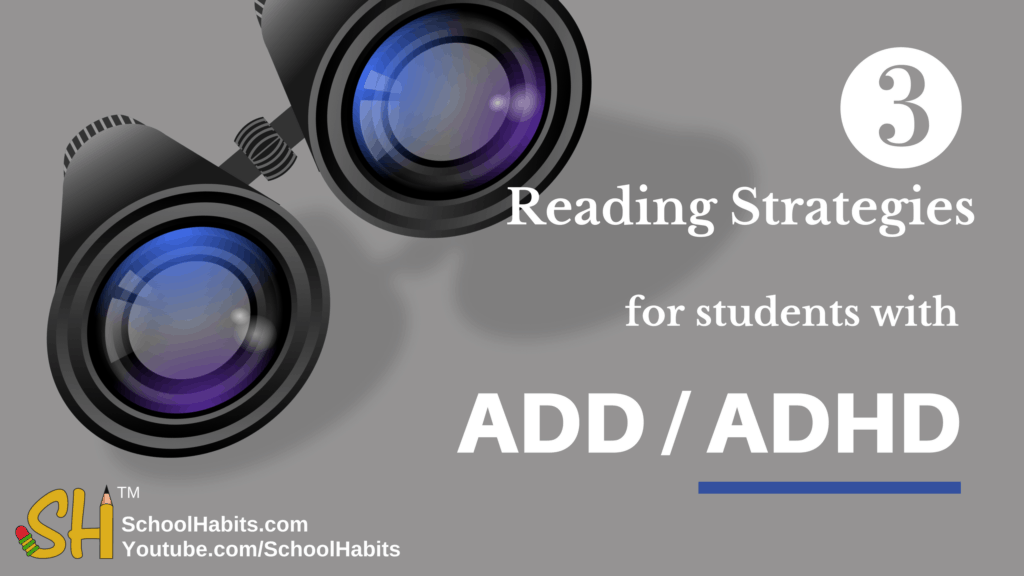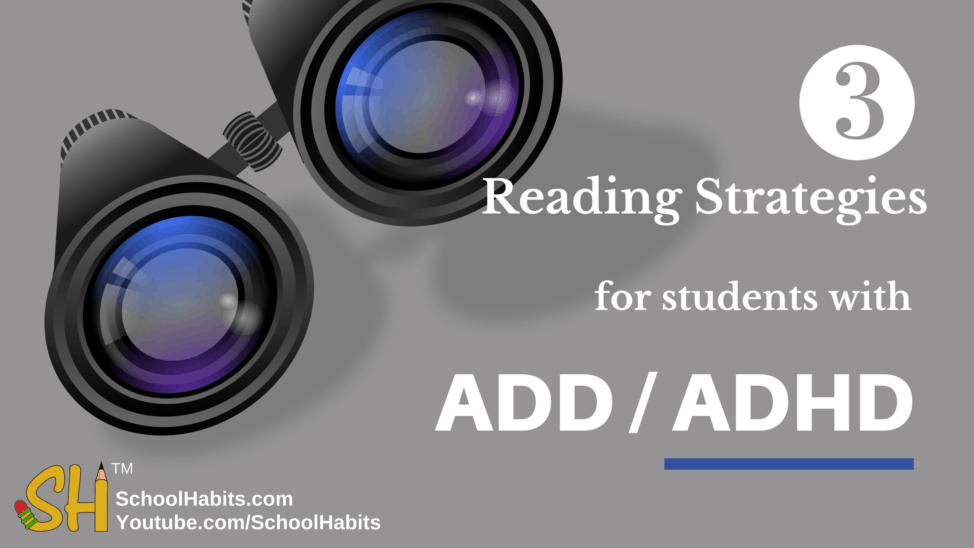
Academic reading can be a struggle for any student — but it can be especially difficult for students with attention deficit hyperactivity disorder (ADHD). Reading requires controlled focus and prolonged attention, which most students with ADHD do not adequately regulate.
Tell me if this scenario sounds familiar: You pick up a book or an article that your teacher assigned. If you’re lucky, you get to the bottom of the page without stopping. (That itself is an accomplishment for many of us.) But wait — when you get to the bottom of the page, or even the end of the paragraph, you realize that you don’t even remember a single word. Ugh! Back to the top to read it all over again … oh wait … now you’re hungry and you need (neeeed!) to check your phone … so long, book.
If you have ADHD, you know the above scenario very well. The following reading strategies are for you.
3 reading strategies for students with ADHD
The following reading strategies for students with ADHD are simple enough to be used one at a time, or all together. Do what works for you.
1. Listen to the audio version.
If the reading assignment is a novel, there is an audiobook version out there. Find it. Rent it. Download it. (Audible is the greatest audiobook app ever. Or many public libraries have free audiobook download offerings.) Do what you have to do to GET THAT AUDIO BOOK.
Why? Many students with ADHD benefit tremendously from listening to words instead of reading them. It’s a brain thing. It’s a science thing. Furthermore, listening to an audiobook enables a student to multitask while listening to the book, which has its advantages. As long as the “other” activity isn’t too complex (stick to walking, cleaning, drawing, etc.), this gentle multitasking provides just enough stimulus to keep the student-focused.
2. Read aloud.
Reading aloud is called subvocalization. It’s an incredibly effective reading strategy for students with ADHD, as well as for any reader who is easily distracted. It’s simple too: As you read, quietly speak the words aloud to yourself under your breath. Read loudly enough to hear your own voice, but quietly enough that you won’t distract anyone around you. If you’re reading alone, feel free to belt it out — that’s cool too!
3. Go. Stop. Go.
In other words, read a little bit. Then stop and think. And then read a bit more. Then stop and think. Keep doing this until the end of the assignment.
You can read as much or as little as you want to at a time. Some students might read a full chapter before stopping, but others might only read a paragraph before they get distracted and have to stop. No big deal.
The key is to recognize the moment that you start to zone out. Don’t read one more word beyond this point. Next, take a minute to think about what you just read. If you can, write down one summary sentence in the margins. Or if you can’t remember what you read, then you went too far and will likely have to go back and re-read. That’s okay too. If that happens, just learn from it and read shorter bits at a time.
ADHD and hyperfocus
ADHD is characterized by poor regulation of focus and concentration. And again, this typically means that students will have difficulty paying attention to a single task for an extended period of time. However — and this is a big HOWEVER! — this lack of regulation of focus can also cause hyperfocus. Hyperfocus is when someone focuses deeply and excessively on a single activity for a long period of time, often neglecting all other tasks and happenings in their environment. For some students, hyperfocusing can be a good thing (I won’t put down this book until I’ve read every page!), but for other students, hyperfocus can be just as detrimental as not focusing.
Hopefully these 3 simple reading strategies for students with ADHD help you if you’re struggling with regulating your attention. If you have ADHD and struggle with studying for tests, here are my 11 study tips for ADHD.

